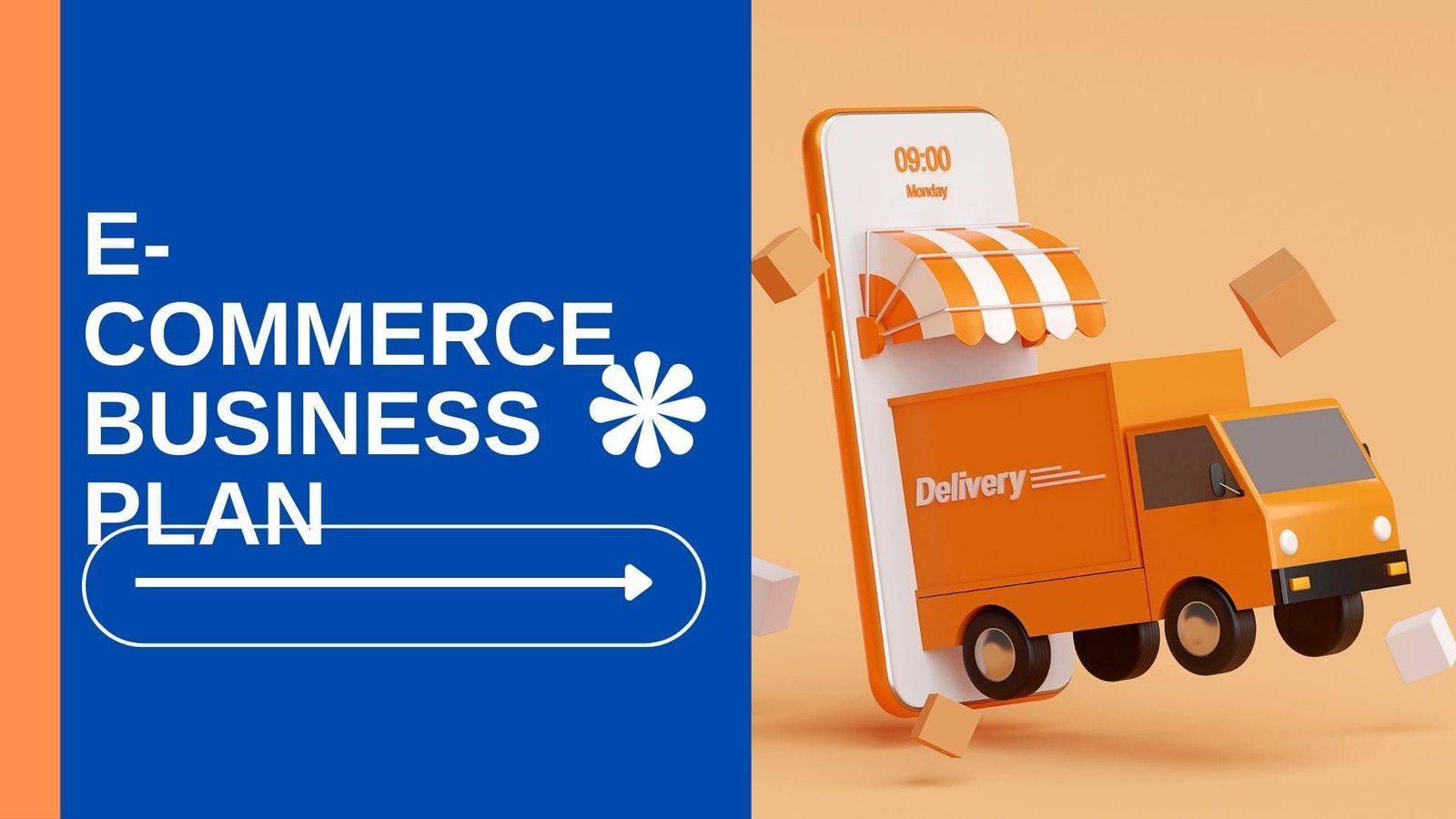
Understanding Market Demand
Researching market demand is crucial when seeking a profitable product to sell online. To effectively pinpoint which products resonate with consumers, it is imperative to utilize a variety of tools and techniques designed for market analysis. Among the most common methodologies is keyword research, which reveals what potential customers are actively searching for. Tools like Google Trends and SEMrush can provide insight into trending products and consumer interests over specific periods.
Analyzing social media platforms can also offer valuable data regarding consumer behavior. By monitoring conversations and trends on platforms like Instagram, Facebook, and Twitter, entrepreneurs can gauge the popularity of certain products within niche markets. Additionally, conducting surveys or polls among targeted demographics can yield direct feedback on consumer preferences, further solidifying the understanding of market demand.
Another element to consider is competition analysis. By evaluating competitors and examining their best-selling products, businesses can identify market gaps or opportunities that may not yet be fully exploited. Tools such as Ahrefs and SimilarWeb can assist in assessing these competitive landscapes. Understanding competitors’ strengths and weaknesses allows aspiring sellers to differentiate their offerings effectively.
While identifying a market demand is vital, achieving a balance between a passion for a product and its profitability cannot be overlooked. Pursuing a product solely based on interest, without considering its market appeal, may lead to unsatisfactory outcomes. Conversely, focusing exclusively on profitability may lead to a lack of engagement and long-term success. Therefore, it is essential to align personal passions with market demand to cultivate a fulfilling and sustainable online business. Navigating this balance effectively increases the likelihood of not only meeting consumer needs but also creating a successful venture in the long run.
Analyzing Competition
In the realm of e-commerce, understanding the competitive landscape is crucial to establishing a successful online business. When assessing competition, it is essential to thoroughly evaluate the strengths and weaknesses of existing players in the marketplace. This can be achieved by researching competitor product offerings, pricing strategies, and marketing tactics to understand their positioning and performance.
Start by identifying key competitors who are selling similar products. Utilize tools such as SEMrush, Ahrefs, or Google Trends to gather insights about their online presence and visibility. Analyze their website traffic, keyword rankings, and social media engagement to gauge their reach. Observing how competitors attract and retain customers can reveal valuable strategies worth emulating.
Next, delve into the specifics of their product offerings. Examine the features, benefits, and quality of the products they provide. Pay attention to customer reviews and feedback on platforms like Amazon, Google, or specialized review sites. This will help you identify any recurring issues or gaps that you can address with your own product. Competitors’ pricing structures should also be scrutinized; understanding how they price their products can inform your pricing strategy and help you position yourself competitively in the market.
Another vital aspect of analyzing competition is their marketing tactics. Assess the effectiveness of their advertising campaigns, social media posts, email marketing, and other promotional efforts. Tools such as BuzzSumo can help track content performance and engagement levels. Observe the tone, messaging, and approach used by competitors to connect with customers, which can inspire your creative strategies while ensuring differentiation.
Ultimately, a thorough analysis of competition will provide insights into market saturation and reveal potential opportunities. By identifying gaps where customer needs are not fully met, you can carve out a niche in the market, positioning your online business for success.
Utilizing Product Research Tools
In the quest to identify a profitable product to sell online, leveraging product research tools is an invaluable strategy. These tools provide insights into market trends, sales data, and consumer preferences, all of which are critical for making informed decisions. One of the most popular tools available is Google Trends. It allows users to analyze the popularity of search queries over time, enabling sellers to gauge interest in specific products. By examining the trends, entrepreneurs can identify seasonal products or those experiencing a surge in consumer interest, thus enhancing their chances of selecting a winning product.
Another significant resource is the Amazon Best Sellers list. This platform showcases the most popular products in various categories, offering a direct window into what consumers are currently buying. By analyzing best-selling items, potential sellers can uncover opportunities within niche markets or identify products with robust sales but limited competition. The reviews and ratings associated with these items also provide essential information regarding customer satisfaction and potential areas for improvement, informing product selection.
Additionally, integrating e-commerce analytics tools such as Jungle Scout and Helium 10 can further refine research efforts. These platforms specialize in offering comprehensive insights into sales volume, estimated revenues, and keyword performance, which are instrumental in predicting a product’s future performance. By utilizing these product research tools, sellers can effectively assess market viability, align their offerings with consumer demand, and optimize their overall strategy. The combination of data from these various sources creates a robust framework for identifying and analyzing potential profitable products to sell online, paving the way for informed and strategic business decisions.
Identifying Your Target Audience
Understanding your target audience is a critical step in the journey of finding a profitable product to sell online. This involves comprehensively analyzing demographics, buying habits, and preferences that can significantly impact product performance. By delving deep into the characteristics of your potential buyers, you can develop products and marketing strategies that align with their needs and desires, ensuring a higher chance of success in the competitive e-commerce landscape.
Demographics play a vital role in defining your audience. This encompasses aspects such as age, gender, income level, education, and geographic location. Collecting this information can help identify patterns that indicate who is most likely to purchase your product. For instance, if your product is targeted primarily at young adults, your marketing approach should be more digital-oriented, leveraging platforms frequented by this age group.
Equally important are the buying habits of your audience. Understanding how consumers interact with products, their purchasing frequency, and their preferred shopping channels can offer valuable insights. For example, some buyers may prefer shopping online due to convenience, while others may favor in-person experiences for better product examination. Analyzing these preferences allows you to position your product effectively, whether through e-commerce platforms or brick-and-mortar stores.
Creating buyer personas is an effective strategy for synthesizing your findings. A buyer persona is a semi-fictional representation of your ideal customer, formulated from market research and real data about your existing customers. By crafting detailed personas, you can tailor your product offerings and marketing efforts to meet the specific needs and preferences of your audience. This not only enhances customer satisfaction but also maximizes the potential for sustainable profitability over time.
Evaluating Profit Margins
Evaluating profit margins is a crucial step in determining the financial viability of potential products to sell online. The profit margin essentially reflects the difference between the cost incurred to bring a product to market and the revenue generated from its sale. Understanding this concept allows online sellers to make informed decisions about which products may yield the highest financial returns. The first aspect to consider in calculating profit margins is the cost of goods sold (COGS), which includes the direct costs attributable to the production of the products being sold. This can encompass materials, labor, and any other expenses directly associated with bringing a product to market.
In addition to COGS, sellers must also take into account shipping costs, which can vary significantly based on shipping methods, distances, and the weight or dimensions of the products. Furthermore, potential advertising expenses, necessary to promote the product effectively and attract customers, should also be integrated into the cost analysis. By meticulously calculating these costs, you can derive an accurate picture of the total expenses involved in the sales process.
The profit margin can be calculated using the formula: (Sales Price – Total Costs) / Sales Price. A higher profit margin indicates a more financially viable product, while a lower margin may suggest the need for reevaluation of pricing strategies or reconsideration of the product itself. It is also beneficial to compare the calculated profit margins of various products within the same niche to identify which offerings can deliver the best returns. By taking these steps, sellers can confidently assess whether a product is indeed profitable after expenses while remaining competitive in the online marketplace.
Testing and Validating Product Ideas
Before bringing a product to market, it is crucial for aspiring entrepreneurs to engage in testing and validating their product ideas to ensure profitability. Market testing provides insights into customer preferences and demand, thus decreasing the likelihood of financial loss. Several methods can be employed to effectively gauge market interest.
One of the most accessible ways to gather feedback is through surveys. Conducting online surveys allows sellers to reach a wider audience quickly and easily. By formulating targeted questions regarding potential product features, pricing, and purchasing intent, entrepreneurs can garner vital insights that shape their offerings. Various tools are available for creating these surveys, and using social media platforms can enhance outreach. This cost-effective method is particularly useful in the early stages of product development.
In conjunction with surveys, focus groups are another valuable strategy. A focus group involves gathering a small group of individuals representative of the target market to discuss their views about a product concept. This qualitative approach fosters in-depth discussions and allows entrepreneurs to observe reactions and gain nuanced insights that surveys may not capture. While focus groups require more time and resources, the qualitative data obtained can significantly inform product adjustments and positioning.
Moreover, crowdfunding platforms provide a powerful means of validating product ideas. By launching a campaign, entrepreneurs can present their product concept and solicit funds from interested consumers. The success of the crowdfunding effort serves as a strong indicator of market demand. In addition to financial backing, the feedback received during the campaign can inform product enhancements before its official launch.
In conclusion, testing and validating product ideas through methods such as surveys, focus groups, and crowdfunding is essential for minimizing risks and confirming market interest. By investing effort in these strategies, entrepreneurs can enter the market with a product tuned to the needs and desires of their potential customers.
Building a Unique Selling Proposition (USP)
Creating a Unique Selling Proposition (USP) is a critical component in distinguishing a product from its competitors in the online marketplace. A well-defined USP not only enhances brand identity but also communicates the specific value that your product offers to potential customers. The essence of a USP lies in pinpointing what makes your product unique and conveying this message effectively through branding and marketing strategies.
The first step in building a robust USP is to conduct thorough market research. Understanding the competitive landscape allows businesses to identify gaps and opportunities that can be leveraged. Analyze competitors’ offerings, paying close attention to their strengths and weaknesses. This research will help you determine which product features or attributes can be emphasized to stand out from the crowd. For instance, if competitors focus on price, you might decide to highlight superior quality, customer service, or innovative attributes that enhance user experience.
Branding plays a fundamental role in articulating your USP. Establishing a strong brand identity—through logo design, color schemes, and voice—can create an emotional connection with your audience. A compelling narrative surrounding the product can significantly enhance its perceived value. By effectively communicating the brand’s mission and values, potential customers are more likely to resonate with your offering and view it as a worthy investment.
Marketing messaging is another crucial aspect of a successful USP. Clear, concise, and persuasive language is vital for conveying the unique benefits of your product. Highlight how your offering solves specific problems or improves the customer’s life, ensuring that the message aligns with the audience’s values and expectations. Combining these elements effectively can lead to a distinct competitive advantage, ultimately attracting more customers and fostering brand loyalty.
Sourcing Products and Suppliers
When venturing into the e-commerce realm, sourcing products effectively is crucial for establishing a profitable business. Entrepreneurs have several options at their disposal, including dropshipping, wholesaling, and manufacturing. Each method presents its own set of advantages and challenges, which requires careful consideration to align with business goals.
Dropshipping is a cost-effective model where the retailer sells products without holding inventory. Instead, products are shipped directly from the supplier to the customer. This method reduces overhead costs, as there is no investment in inventory. However, it is essential to verify the reliability of dropshipping suppliers to avoid issues such as stock shortages or shipping delays, which can negatively affect customer satisfaction.
Wholesaling allows business owners to purchase products in bulk at reduced rates from manufacturers or distributors. This approach can lead to higher profit margins as products are typically sold at retail prices. To find reliable wholesale suppliers, resources such as online directories, trade shows, and industry forums can be beneficial. It is advisable to request samples of the products to ensure they meet quality standards before committing to larger orders.
Manufacturing is another sourcing method where retailers create their own products. This offers complete control over design and quality, although it often requires a higher initial investment. Engaging with ethical manufacturers not only improves product quality but also enhances brand reputation. Additionally, fostering strong relationships with suppliers can create opportunities for better pricing, improved terms, and exclusive rights to products.
Regardless of the chosen method, it is vital to negotiate terms clearly, ensuring both parties understand expectations regarding pricing, delivery times, and returns. Maintaining high product quality is paramount to avoid customer dissatisfaction. Employing these strategies contributes to a solid foundation for a successful online business.
Launching and Marketing Your Product
Successfully launching and marketing a product is crucial for capturing the interest of potential customers and generating sales. To begin, it’s essential to develop a cohesive digital marketing strategy that integrates various channels, optimizing reach and effectiveness. Social media platforms, such as Facebook, Instagram, and Twitter, can be particularly powerful in building brand awareness. Creating engaging content—such as videos, images, and posts that highlight product features and benefits—encourages audience interaction and shares, driving organic traffic to your online store.
Email marketing remains a highly effective tactic for reaching customers. Building an email list before the launch allows you to communicate directly with your target audience. Sending out dedicated newsletters and promotional offers can keep potential buyers informed and excited about the forthcoming product. Be sure to segment your audience for more personalized messaging, which can significantly enhance engagement rates.
Another vital aspect of the launch strategy is search engine optimization (SEO). Conduct keyword research to determine the terms potential customers are searching for and incorporate them into your product descriptions and website content. This practice will improve your search engine rankings, making it easier for customers to find your product online. Additionally, consider implementing pay-per-click (PPC) advertising campaigns on platforms like Google Ads to gain immediate visibility and attract traffic, especially in the early stages of product launch.
Post-launch, it’s important to focus on building long-term customer relationships. Engage with your audience through feedback surveys and encourage reviews, as this input can provide valuable insights into customer satisfaction and product performance. Continually monitoring customer feedback helps in making informed adjustments to the product or marketing strategies. Establishing strong relationships not only cultivates loyalty but can also lead to referrals, further expanding your customer base.







